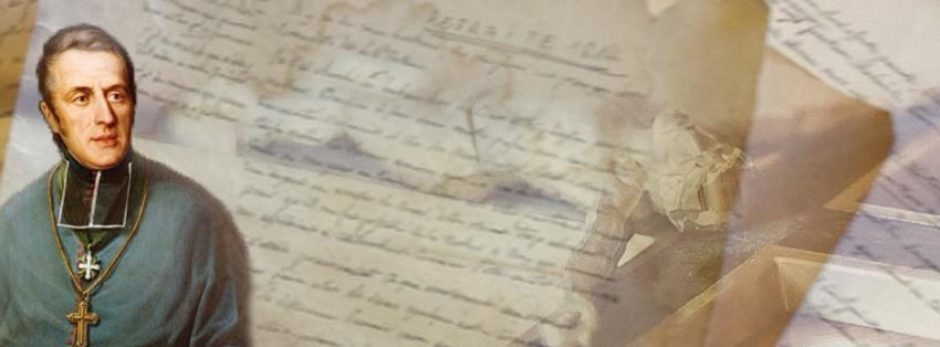HERE ARE TWO OF US, TWO ABLE BODIED VOLUNTEERS, VERY WILLING, ON FIRE TO SACRIFICE OURSELVES TO THE POINT OF MARTYRDOM
Hubenig concludes his narrative of the 1830 Revolution and riots:
With the quelling of the workers riots, the press was muzzled and liberties were curtailed. As a result, there was no national outcry when 11,000 workers were transported to Algeria, condemned to a life of hard labour in the fierce North African sun. In the face of such oppression, the Church remained silent – even liberal Catholics like Lacordaire and Mont Lambert. Victor Hugo cried out in anguish: “But you – Catholics, priests, bishops, men of religion, you who sit in this assembly and whom I see in the midst of us – why do you not rise up? It is your duty! What are you doing sitting there on those benches? Go up to the podium with the authority of your holy traditions; go up there and say to those who inspire cruel measures and to those who ap plaud barbarous laws and to those who push the majority onto a disastrous path – go up there and say to them that what they are doing is bad, that what they are doing is detestable, that what they are doing is impious. Why do you just sit there and say nothing?” (Living in the Spirit’s Fire, p. 166)
The institutional French Church may have remained silent, but some of the Oblates wanted to respond to the abandoned prisoners as Eugene had done and taught in previous years. Father Dassy wrote to Eugene on June 30:
“To accompany these poor wretches on a long-lasting journey, to establish a settlement with them in the Islands where they will be gathered in order to work to renew them through Christianity…
What a work worthy of you and perfectly in harmony with our vocation. Until this point in time, the newspapers have told us nothing about the negotiations already undertaken by other Congregations with the competent authorities. This being what it is, Bishop, if you believe you should ask for this mission for his children, here are two of us, two able bodied volunteers, very willing, on fire to sacrifice ourselves to the point of martyrdom in order to fulfill such noble and such difficult endeavours. Just speak the word and we will be on our way, Father Mouchel and I. Most gladly we will offer ourselves for this task, especially myself, for good and all through a genuinely arduous life to atone for all the sins of my life. This is not a case of human fancy; I am being inspired by faith alone.” (https://www.omiworld.org/lemma/dassy-louis-toussaint/)
REFLECTION
“Pilgrims of hope in communion was indeed the theme of our General Chapter. The Oblates feel challenged by many of the cries that resound in our world, the voices of the poor and the abandoned reach out to God who is looking at us and calling us to a response. The Church asks us to leave our comfort zones and go to the peripheries. The contribution of our lay associates helped us to see that we are not alone in our missionary field and in living the charism. We are on the way together.” (Message of the 37th OMI General Chapter)
This entry was posted in
WRITINGS. Bookmark the
permalink.

I am reminded of the Synod in Rome last October, which was attended by Bishops, Cardinals, clerics, religious and members of the laity. We all had a seat at the table, listening and sharing as we have been inspired and called.
I think for a moment of Joseph Gerard OMI who loved all who he met s he spent his life loving, and Fr. Vincenzo Bordo OMI in Korea, feeding and caring for the poorest of the poor: both of them who did not measure if those they loved were Christian or not… We Lay Associates also take part as we reach out to the most abandoned of our times, be they prisoners, refugees, the homeless, the hungry, all Indigenous Families, 2SLGBTQ+ and all who are considered to be the lepers of our time.
We may well find ourselves “among the marginalized of our communities, our society and our Church… walking with those who, like us hold within themselves tremendous beauty, strength and gifts as well as weaknesses, brokenness and limitations, that together we may help one another experience the love of God…,
“A spirit of simplicity and joyfulness marks our communities. In sharing what we are and what we have with one another, we find acceptance and support… In humility and with the strength of charity, we express our responsibility for each other in [ed. familial] correction and forgiveness.” (C39)
I look once again at the logo for the 37th General Chapter and the image of us all walking together… We are not segregated into lines according to our roles, but together as we carry and share our hope in communion – with God, with the Church, with members of the familial communities that we are invited to walk with…
Let us rejoice and give thanks!